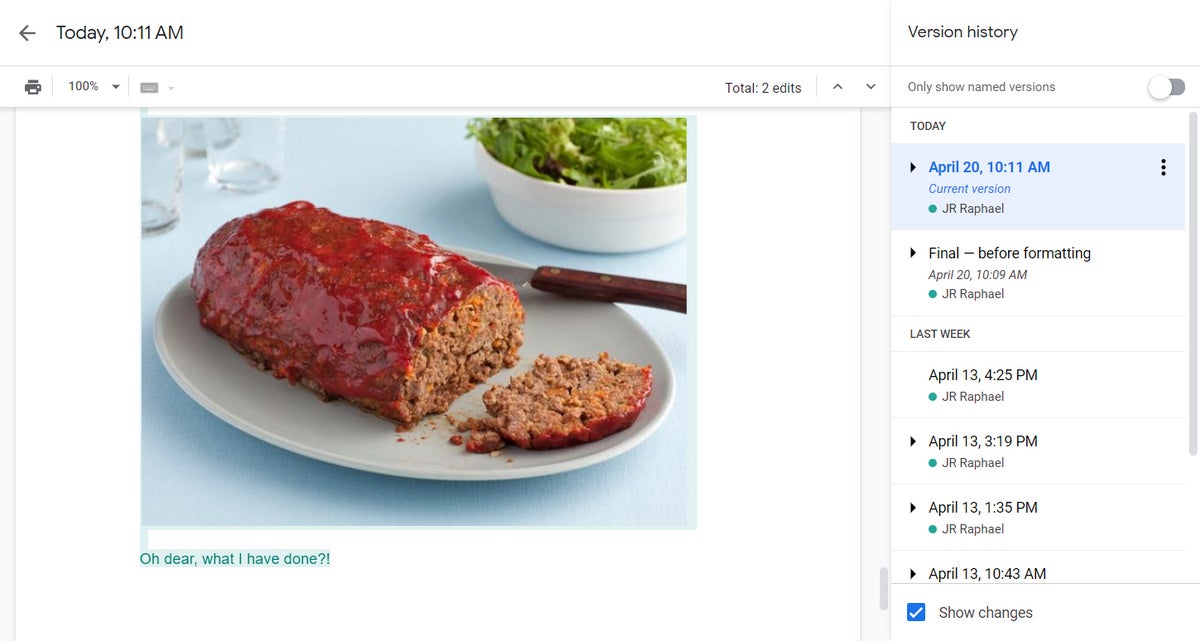

Once upon a time, a word processor was little more than a blank canvas for your finger-transmitted musings: You’d open up the program, type whatever you wanted — and, well, that was pretty much it.
These days, dealing with documents has practically become an art. And even though Google Docs is among the more approachable options out there (paging Microsoft Office Ribbon…), the service has grown surprisingly multilayered as of late.
For the most part, that’s a good thing. Docs is still generally quite easy to use, and it packs more than enough punch for most common word processing purposes. But sometimes, the layers of complexity can lead to cloud-sized headaches that are anything but light and fluffy.
Today, we’ll think through some of the most common Docs challenges and the fastest ways to fix ’em. Whether you’re responsible for only your own Docs usage or you act as the go-to troubleshooter for your office, friend group, or family (be it on an official basis or in one of those lovely unpaid “tech support” positions), this is the reference you need to solve whatever woes may come your way.
(Note that most of the issues described here are specific to the Docs web interface for desktop browsers, which is far more fully featured and complex than the service’s mobile app equivalents.)
Documents often represent hours upon hours of precious work — and once they’re gone, ideas aren’t always easy to get back. So what happens when a member of your team (who may or may not be, erm, you) makes a change to a Google Docs document that you later come to realize was a mistake?
Sure, there’s the universal Undo command — Ctrl-Z (or ⌘-Z, on a Mac), which can also be found in Docs’ Edit menu — but that works only if you’re the one who made the edit in question and if you just did it. If someone else is to blame, if you’ve navigated away from the document since the change got made, or if you’ve made a bunch of other changes since then that you do want to keep, Undo isn’t gonna do you a lick of good.
So here’s the fix: Remember to rely on Docs’ robust Version History system. You can find it in the File menu or by using the Ctrl-Alt-Shift-H (or ⌘-Alt-Shift-H) keyboard shortcut.
There, you’ll find versions of your document that were autosaved at different points and can be zapped directly back over as full replacements for the current version of your document.
The complicating issue, though, is that those versions are saved only sporadically, which means you may or may not find one from the precise point you’d like to restore. The best way around that is to manually force Docs to save a version anytime you reach a milestone or you’re expecting major changes to be made. That way, you always know you have a quick ‘n’ easy way to get back to the way things were before — or at the very least to view your pre-shakeup version as a point of reference.
To manually force Docs to save a version of your document, open the File menu, click “Version history,” then select “Name current version.” Give the version any name you want — I’m partial to Clancy, myself, but feel free to use something more descriptive — and then that exact state of your document will always be available and easily identifiable within the main Version History menu.

Have you ever pasted over text from an email, a web page, or some other source and then realized parts of it were in a wacky ALL CAPS format? Or maybe you’re working on editing a document and need all the headings to exist in title case in order to look correct. Whatever the, ahem, case may be, save yourself the hassle of manually transforming all that text and let Docs do the heavy lifting.
Just highlight the text in question, click the Format menu at the top of the screen, then click “Text” followed by “Capitalization.” There, deep in the Docs menu structure, you’ll find a one-click tool for changing whatever text you selected into all lowercase, all uppercase, or title case — with no time wasted and only minimal effort required.
By default, Google Docs performs some formatting magic that’s meant to be helpful but can often be annoying. For instance, the service will automatically capitalize the first word of every sentence you type, it’ll change all the quotation marks you enter from the standard straight-quote style into the controversial curly-quote style, and it’ll add a hyperlink onto any web address you enter into a document.
Docs also changes standard three-character ellipses (…) into single-character ellipses (…), using a Unicode symbol for that piece of punctuation. It adjusts normal numerical fractions (like 1/2) into single-character symbols (like ½), too, and it changes certain abbreviations (like c/o) into their single-character Unicode symbol equivalents (like ℅).